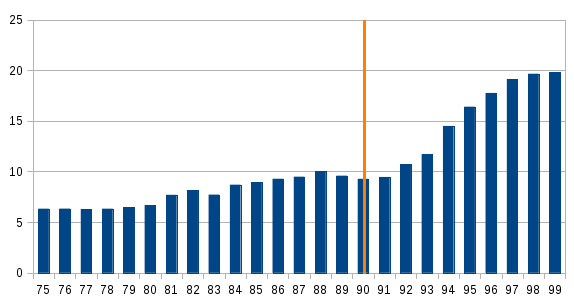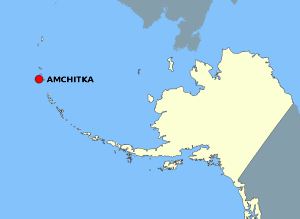|
Río Matanza
The Matanza River is a stream in Argentina that originates in the Buenos Aires Province and defines the southern boundary of the Buenos Aires federal district. It empties into the Río de la Plata between Tandanor and Dock Sud. The La Boca neighbourhood and the Boca Juniors football club are located near the stream's mouth. The Spanish word ''boca'' means "mouth". The river's course has been canalized and channelized in places, especially along its lower course. From its source down to La Noria Bridge on Avenida General Paz, the river is usually referred to as ''Río La Matanza'', and from that point onwards as ''Riachuelo''. Approximately 3.5 million people live in its drainage basin of . The south-easterly storm wind, known as ''Sudestada'', hinders the waters of the Riachuelo from reaching the Río de la Plata, producing frequent flooding in low-lying areas like La Boca and Barracas. Since 1995 a number of flood control projects have been carried out to prevent such occurr ... [...More Info...] [...Related Items...] OR: [Wikipedia] [Google] [Baidu] |
Argentina
Argentina, officially the Argentine Republic, is a country in the southern half of South America. It covers an area of , making it the List of South American countries by area, second-largest country in South America after Brazil, the fourth-largest country in the Americas, and the List of countries and dependencies by area, eighth-largest country in the world. Argentina shares the bulk of the Southern Cone with Chile to the west, and is also bordered by Bolivia and Paraguay to the north, Brazil to the northeast, Uruguay and the South Atlantic Ocean to the east, and the Drake Passage to the south. Argentina is a Federation, federal state subdivided into twenty-three Provinces of Argentina, provinces, and one autonomous city, which is the federal capital and List of cities in Argentina by population, largest city of the nation, Buenos Aires. The provinces and the capital have their own constitutions, but exist under a Federalism, federal system. Argentina claims sovereignty ov ... [...More Info...] [...Related Items...] OR: [Wikipedia] [Google] [Baidu] |
Greater Buenos Aires
Greater Buenos Aires (, GBA), also known as the Buenos Aires Metropolitan Area (, AMBA), refers to the urban agglomeration comprising the Autonomous City of Buenos Aires Buenos Aires, controlled by the government of the Autonomous City of Buenos Aires, is the Capital city, capital and largest city of Argentina. It is located on the southwest of the Río de la Plata. Buenos Aires is classified as an Alpha− glob ... and the adjacent 24 ''partidos of Buenos Aires, partidos'' (districts) in the Buenos Aires Province, Province of Buenos Aires. Thus, it does not constitute a single administrative unit. The conurbation spreads south, west and north of Buenos Aires city. To the east, the Río de la Plata, River Plate serves as a natural boundary. Urban sprawl, especially between 1945 and 1980, created a vast metropolitan area of over 3,800 km² (1,500 mi²) – or 19 times the area of Buenos Aires proper. The 24 suburban ''partidos'' (counties) grew more than sixfold in ... [...More Info...] [...Related Items...] OR: [Wikipedia] [Google] [Baidu] |
Clarín (Argentine Newspaper)
(, ) is the largest newspaper in Argentina and the second most circulated in the Spanish-speaking world. It was founded by Roberto Noble in 1945, published by the Clarín Group. For many years, its director was Ernestina Herrera de Noble, the founder's wife. is part of ''Periódicos Asociados Latinoamericanos'' ( Latin American Newspaper Association), an organization of fourteen leading newspapers in South America. History was created by Roberto Noble, former minister of the Buenos Aires Province, on 28 August 1945. It was one of the first Argentine newspapers published in tabloid format. It became the highest sold Argentine newspaper in 1965, and the highest sold Spanish-speaking newspaper in 1985. It was also the first Argentine newspaper to sell a magazine with the Sunday edition, since 1967. In 1969, the news were split into several supplements by topic. In 1976, high color printing was benefited by the creation of Artes Gráficas Rioplatense (AGR). For many yea ... [...More Info...] [...Related Items...] OR: [Wikipedia] [Google] [Baidu] |
María Julia Alsogaray
María Julia Alsogaray (October 8, 1942 – September 24, 2017) was an Argentine politician and engineer convicted in 2004 for financial crimes against the state. Biography The second of three children of socialite Edith Gay and conservative politician Álvaro Alsogaray, she was born in Buenos Aires and earned a degree in engineering at the Catholic University of Argentina in 1969. She was elected to Congress in 1985 on her father's ticket, the Union of the Democratic Centre (UCeDé), and became an outspoken defender of free markets during the presidency of Raúl Alfonsín. She married Francisco Erize, and had two sons: Alvaro Erize and Francisco Erize. The UCeDé became a close ally of Justicialist Party nominee Carlos Menem after the 1989 election (in which Menem ran as a populist), and Alsogaray was appointed to head the privatizations of the ENTel state phone company in 1990 and of the Somisa state steel works in 1991. This post earned Alsogaray disapproval when reports e ... [...More Info...] [...Related Items...] OR: [Wikipedia] [Google] [Baidu] |
Carlos Menem
Carlos Saúl Menem (2 July 1930 – 14 February 2021) served as the 50th president of Argentina for ten years, from 1989 to 1999. He identified as Peronism, Peronist, serving as President of the Justicialist Party for 13 years (from 1990 to 2001 and again from 2001 to 2003), and his political approach became known as Menemism. Born in Anillaco, La Rioja Province, Argentina, La Rioja, to a Syrian Argentines, Syrian family, Menem was raised as a Muslim,"Carlos Menem" ''Encyclopædia Britannica'' but later converted to Catholic Church, Roman Catholicism to pursue a political career. Menem became a Peronist during a visit to Buenos Aires. He was elected governor of La Rioja in 1973, deposed and detained following the 1976 Argentine coup d'état, and re-elected in 1983. He defeated the Buenos Aires governor Antonio Cafiero in ... [...More Info...] [...Related Items...] OR: [Wikipedia] [Google] [Baidu] |
Puerto La Boca Riachuelo Transbordador
{{disambiguation, geo ...
Puerto, a Spanish word meaning ''seaport'', may refer to: Places *El Puerto de Santa María, Andalusia, Spain *Puerto, a seaport town in Cagayan de Oro, Philippines *Puerto Colombia, Colombia *Puerto Cumarebo, Venezuela *Puerto Galera, Oriental Mindoro, Philippines *Puerto La Cruz, Venezuela *Puerto Píritu, Venezuela *Puerto Princesa, Palawan, Philippines *Puerto Rico, an unincorporated territory of the United States *Puerto Vallarta, Mexico Others *Milton Jesús Puerto (born 1969), Honduran politician * ''Puerto Rico'' (board game) * Operación Puerto doping case See also * * Puerta (other) Puerta refers to the old original gates of the Walled City of Intramuros in Manila. Puerta may also refer to: People * Antonio Puerta, Spanish footballer * Alonso José Puerta, Spanish politician * Lina Puerta, American artist *Mariano Puerta ... [...More Info...] [...Related Items...] OR: [Wikipedia] [Google] [Baidu] |
World Water Day
World Water Day is an annual United Nations (UN) observance day held on 22 March that highlights the importance of fresh water. The day is used to advocate for the sustainable management of Water resources, freshwater resources. The theme of each year focuses on topics relevant to Drinking water, clean water, sanitation and hygiene (WASH), which is in line with the targets of Sustainable Development Goal 6.WHO and UNICEF (2017Progress on Drinking Water, Sanitation and Hygiene: 2017 Update and SDG Baselines. Geneva: World Health Organization (WHO) and the United Nations Children's Fund (UNICEF), 2017 The UN World Water Development Report (WWDR) is released each year around World Water Day. UN-Water is the convener for World Water Day and selects the theme for each year in consultation with UN organizations that share an interest in that year's focus. The theme for 2021 was "Valuing Water" and the public campaign invited people to join a global conversation on social media to "tell ... [...More Info...] [...Related Items...] OR: [Wikipedia] [Google] [Baidu] |
Nicolás García Uriburu
Nicolás García Uriburu (December 24, 1937 – June 19, 2016) was an Argentine artist, landscape architect, and ecologist. His work in land art was aimed at raising consciousness about environmental issues such as water pollution. Life and work Born in Buenos Aires in 1937, García Uriburu began painting at an early age and, in 1954, secured his first exhibition at the local Müller Gallery. He enrolled at the University of Buenos Aires, where he received a degree in architecture, and relocated to Paris with his wife, Blanca Isabel Álvarez de Toledo, in 1965. He would later father a child named Azul with Blanca. His ''Three Graces'', a sculpture in the pop art style, earned him a Grand Prize at the Salon (Paris), National Sculpture Salon in 1968. Venturing into conceptual art, he mounted an Poly(methyl methacrylate), acrylic display at the Iris Clert Gallery, creating an artificial garden that set a new direction for his work towards environmental activism. [...More Info...] [...Related Items...] OR: [Wikipedia] [Google] [Baidu] |
Greenpeace
Greenpeace is an independent global campaigning network, founded in Canada in 1971 by a group of Environmental movement, environmental activists. Greenpeace states its goal is to "ensure the ability of the Earth to nurture life in all its biodiversity, diversity" and focuses its campaigning on worldwide issues such as climate change, deforestation, overfishing, whaling, commercial whaling, genetic engineering, Anti-war movement, anti-war and anti-nuclear issues. It uses direct action, advocacy, research, and ecotage to achieve its goals. The network comprises 26 independent national/regional organisations in over 55 countries across Europe, the Americas, Africa, Asia, Australia and the Pacific, as well as a coordinating body, Greenpeace International, based in Amsterdam, Netherlands. The global network does not accept funding from governments, corporations, or political parties, relying on three million individual supporters and foundation grants. [...More Info...] [...Related Items...] OR: [Wikipedia] [Google] [Baidu] |
Bartolomé Mitre
Bartolomé Mitre (26 June 1821 – 19 January 1906) was an Argentine statesman, soldier and author. He was President of Argentina from 1862 to 1868 and the first president of Argentine Civil Wars#National unification, unified Argentina. Mitre is known as a versatile statesman, military man, politician, journalist, historian, writer and poet. He was a major figure in the history of Argentina during the second half of the 19th century. He was the figure that best characterized liberalism in Argentina, but he was a moderate and flexible liberal, not dogmatic. Early life Mitre was born on 26 June 1821 in Buenos Aires. His father was of Greek descent and the family name was originally Mitropoulos.Gardner, James. "Buenos Aires: The Biography of a City", 110. (St Martin's Press, 2015, ). In 1831, his family settled in Uruguay. He became a soldier, and graduated in 1839 from the Military School of Montevideo, with the rank of second lieutenant of artillery. Also a journalist, his ... [...More Info...] [...Related Items...] OR: [Wikipedia] [Google] [Baidu] |
Slum
A slum is a highly populated Urban area, urban residential area consisting of densely packed housing units of weak build quality and often associated with poverty. The infrastructure in slums is often deteriorated or incomplete, and they are primarily inhabited by impoverished people."What are slums and why do they exist?" UN-Habitat, Kenya (April 2007) Although slums are usually located in urban areas, in some countries they can be located in suburban areas where housing quality is low and living conditions are poor. While slums differ in size and other characteristics, most lack reliable sanitation services, Water supply, supply of clean water, reliable electricity, law enforcement, and other basic services. Slum residences vary from shanty town, shanty houses to pr ... [...More Info...] [...Related Items...] OR: [Wikipedia] [Google] [Baidu] |




